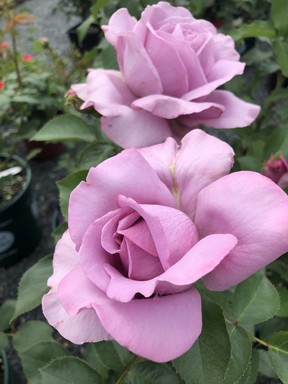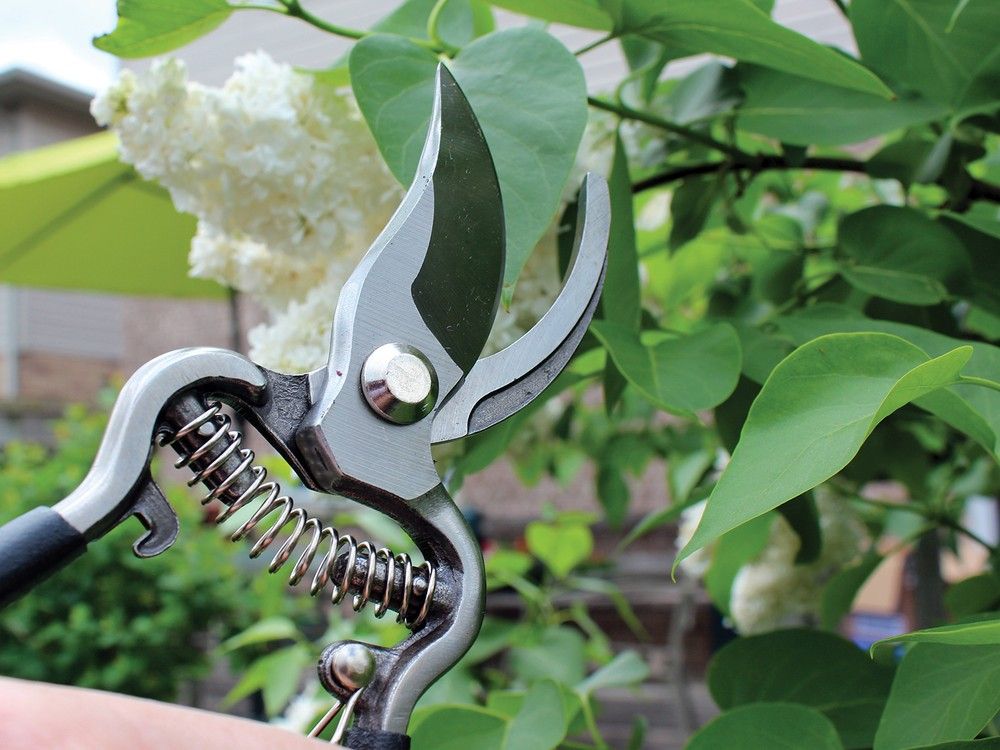[ad_1]
Opinion: We need to be a little cautious about what and how we prune our plants back to prevent the loss of this year’s flowers.

Reviews and recommendations are unbiased and products are independently selected. Postmedia may earn an affiliate commission from purchases made through links on this page.
Article content
After experiencing so much winter weather, when we begin to see the first signs of life in our gardens, it often makes us anxious to get out there and do some cleaning up and pruning.
Advertisement 2
Article content
This is when we need to be a little cautious about what and how we prune our plants back to prevent the loss of this year’s flowers.
Article content
While many of our winter flowering shrubs, like the Chinese witch hazels, sasanqua camellias, winter honeysuckles and jasmine nudiflorum are in bloom now, there is a sequence of colour still to come. Many of our late winter and early spring flowering plants and shrubs are full of buds anxious to open and add early colour to our gardens.
It’s important to understand the difference between plants that bloom on last year’s older growth and have already set buds last summer and fall, and those that bloom on this year’s new growth and then flower. Honestly, it can be confusing.
As a rule of thumb, flowering shrubs which bloom early in the spring had already set their buds by midsummer of last year. Even members of the same plant family, like hydrangeas, have “old growth” buds already set, and those like the paniculata grandifloras (PeeGee’s), need to be cut back soon, to improve the number and quality of the blooms we will enjoy this year.
Advertisement 3
Article content
In many cases, we can already see distinctive buds on many shrubs; Mop Head (macrophylla) hydrangeas, magnolias, forsythias, flowering quince, and lilacs, just to mention a few. You’ve waited a whole year to enjoy their colour, as well as their pollinator attraction capabilities, so it’s best to leave them alone now and enjoy the blooms. You can prune later, when the flowers are finished and the new growth begins. In many cases, especially with the new, more compact varieties of flowering shrubs, you may not need to do much pruning. Perhaps just a tidy-up or thinning out is in order for better performance next year.
Remember, pruning is often necessary to take out old, diseased and dead wood, to maintain the plant’s size in relation to the rest of your landscaping, and to selectively remove competing, cross growing branches to allow more light and air into your plants and so allow for better tree health.
Advertisement 4
Article content

Broadleaved plants like camellias, azaleas, and rhododendrons should be treated the same; let them bloom, wait for signs of new growth to appear, and then prune them back to a size appropriate for your garden.
The beauty of these plants is their ability to produce new growth out of old, hard wood. Tall, lanky plants can be brought down much lower, but the caveat is that the harder you prune, the longer it takes new growth to emerge from those big, old woody stems.
If you prune lightly into the semi-hard growth near the top and tips, the resulting new growth still has time to not only fully develop, but also set new flower buds for next year. Depending on the variety of your rhodo you may not get many blooms the next year, but you will have a much better looking plant in your garden. Japanese azaleas and camellias are much quicker to push out new growth for a nicer looking plant, and for a good bud set for next year.
Advertisement 5
Article content
Heather, on the other hand, like the winter flowering ericas and summer flowering callunas, do not like to be pruned hard. The trick is to let the ericas finish blooming and then, just as the new growth begins, give them a light trim. Summer blooming callunas, however, should be left through the winter. Some of the newer varieties have beautiful foliage colour, so when the worst of winter is over, lightly prune off all the old flower heads. The new, long-blooming, “Bud Bloomers” callunas should be treated the same way. Keep in mind too that these are great pollinator plants, so blooms are very beneficial.
Some flowering shrubs are tricky. The Chinese witch hazels (hamamelis) only bloom on two-year-old wood, so save some of last year’s growth as well as the blooming stems for this year, to have a beautiful winter display.
Advertisement 6
Article content
It’s the later blooming flowering shrubs which need a bit of pruning at this time of year, or whenever winter departs from your area.
I try not to prune too hard because it’s nice to have a good sized plant to provide summer colour. Late blooming spireas, weigelas, potentillas, paniculata hydrangeas and late blooming summer hibiscus can all be pruned now for a better garden performance this year.
After the last hard frost in your area your roses can also be pruned. Today, there is a significant shift to shrub roses on their own roots. They are much hardier than grafted varieties so fare better over winter, most are very disease resistant, and most have a long, continuous bloom time. I have to admit I’ve never been a huge fan of “Knock Out” roses, but over this past very wet year, they were the standouts of all the roses. All shrub roses need to be pruned back hard each year, down to about six to 10 inches, to keep them lower, fuller, and producing more blooms.
Advertisement 7
Article content
Like the shrub roses, traditional hybrid tea, floribunda, and grandiflora roses should also be pruned back reasonably hard for the same reason: lower, fuller plants that create a better display all summer.
Climbers and ramblers are pruned to produce the best colour show. Save four or five of your cleanest, nicest stems and prune them back to about five or six feet. Then remove all the other stems down to three to four inches above the graft.
It’s also time to prune our ornamental grasses, herbaceous perennials, shade and fruit trees, and certain small fruits like raspberries. Take care with each of them and you’ll have good results. Pruning is a wonderful learning process but it doesn’t happen overnight.
As conductors of our gardens, we orchestrate the colour display of all our plants. It’s the care and attention to detail that will bring out the very best in each plant.
Remember, gardening is the slowest of all the performance arts, but one of the most rewarding and enjoyable.
-

Brian Minter: Now is the time to analyze your garden
-

Brian Minter: Make sure you grow only the foods you love to eat
[ad_2]
Source link














Comments
Postmedia is committed to maintaining a lively but civil forum for discussion and encourage all readers to share their views on our articles. Comments may take up to an hour for moderation before appearing on the site. We ask you to keep your comments relevant and respectful. We have enabled email notifications—you will now receive an email if you receive a reply to your comment, there is an update to a comment thread you follow or if a user you follow comments. Visit our Community Guidelines for more information and details on how to adjust your email settings.
Join the Conversation